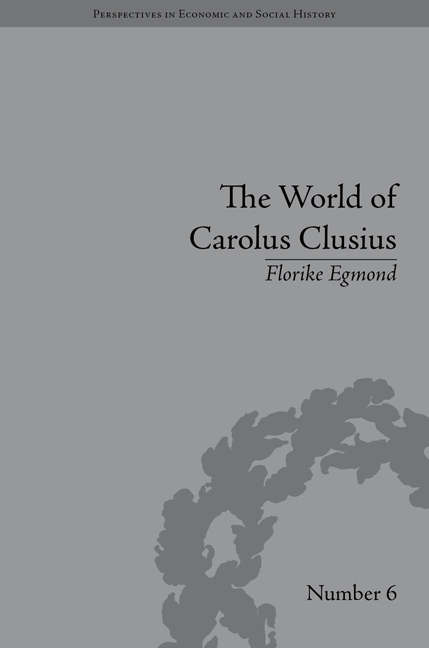Book contents
- Frontmatter
- CONTENTS
- Miscellaneous Frontmatter
- Preface
- Technical Note
- Abbreviations
- List of Figures
- Introduction
- I The Southern Netherlands
- II Habsburg Women
- III Italy
- IV France
- V Holland
- 9 Dutch Ports: Curiosity and the Exotic
- 10 Town and Gown: Leiden and the Convergence of European Cultural Traditions
- VI Beyond Place
- Conclusion
- Notes
- Works Cited
- Index
9 - Dutch Ports: Curiosity and the Exotic
from V - Holland
- Frontmatter
- CONTENTS
- Miscellaneous Frontmatter
- Preface
- Technical Note
- Abbreviations
- List of Figures
- Introduction
- I The Southern Netherlands
- II Habsburg Women
- III Italy
- IV France
- V Holland
- 9 Dutch Ports: Curiosity and the Exotic
- 10 Town and Gown: Leiden and the Convergence of European Cultural Traditions
- VI Beyond Place
- Conclusion
- Notes
- Works Cited
- Index
Summary
In the appendices to his Rariorum of 1601 Clusius included a very lengthy letter by the Middelburg town physician Tobias Roels with marvellously detailed descriptions of manioc, yam, several palms and various other tropical plants. Roels noted in particular how they were grown, processed and eaten or otherwise used, and mentioned his native and European informants.
Our host … showed us a thick, ¾ foot long root, blunt at both ends. At the bluntest end six or seven small thorny branches sprouted forth … which should have carried many leaves; they consisted of 5 or 6 segments and were as long as the palm of a hand. But no leaves could be seen. The root has an almost black bark but is completely white inside. The single little branch that I send you was cut off from this root by me. As you see, it is woody, round, flexible, tough, and rough on account of the many very small thorns. I have asked him [i.e. his host] to send you the root … which he took for the inhame [i.e. yam]; but I have heard differently from the Prefect of the Indies, who had added twelve black slaves from St Thomas [São Tomé] to his other servants. When he had fallen ill on account of the change of air and asked me to come and cure him … I did my best to find out from them what was the case.
[…]
- Type
- Chapter
- Information
- The World of Carolus ClusiusNatural History in the Making, 1550–1610, pp. 141 - 156Publisher: Pickering & ChattoFirst published in: 2014



